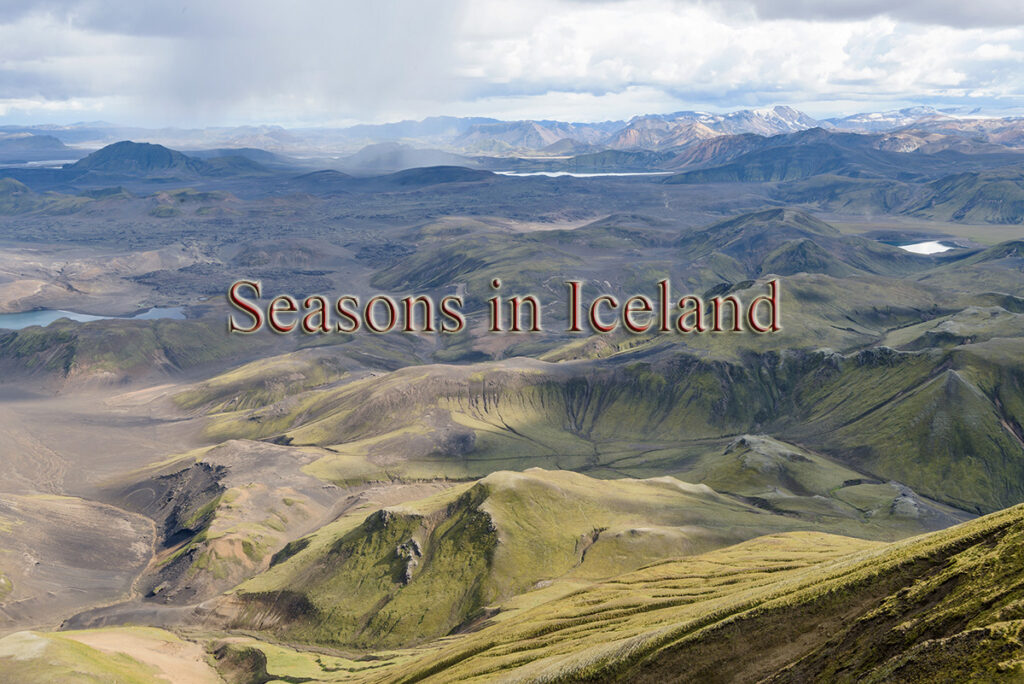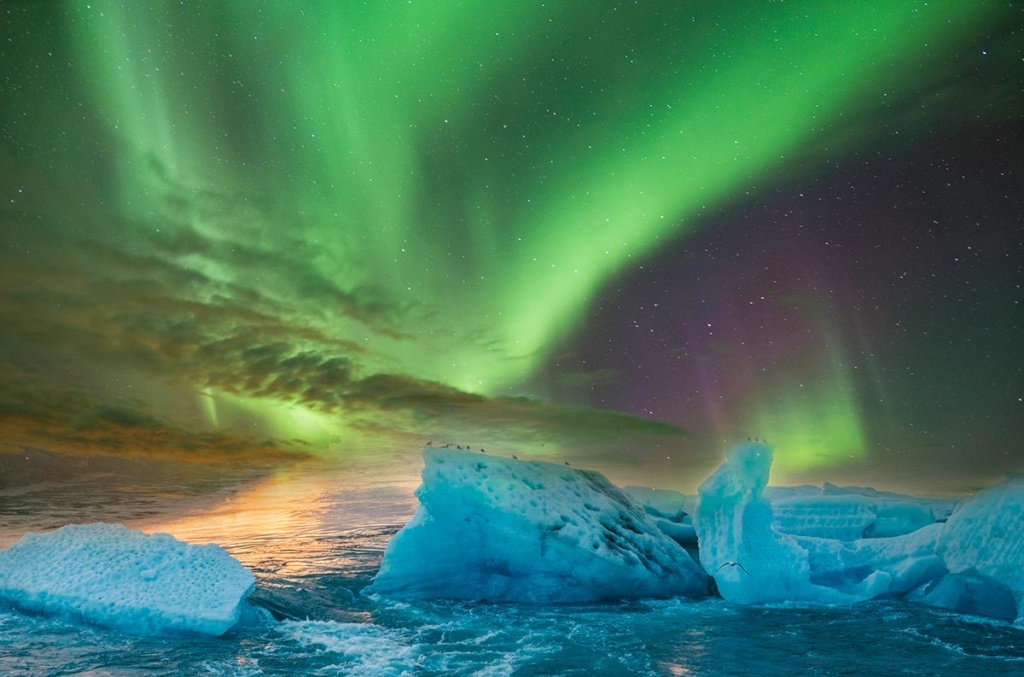The good news is, that anytime you go to Iceland, you can experience a raw beauty of the land.

Simply put, seasons in Iceland are just two. The main season – during the summer moths June – August and the so called Off season – September to May of the next year.
Iceland during the main season – June to August:
Just during this three months about 3times more tourists come to Iceland than in all the other months combined. Even though the sun sets each and every day at least for a couple of hours, you can see quite well 24/7 until the mid August. The temperature would oscillate round 10°C (50 F).
Here there are some main advantages of Iceland in the main season:
- you can see all day and night long. It is not just cool that you can go to visit some sights when most of the people are sleeping, but it can boldly add to your security, you won´t get stuck in the middle of nowhere in complete dark.
- The temperature is cool but not freezing and the wind is generally better bearable.
- The bird lovers especially would come to their own. There is dozens of millions of nesting birds in Iceland every summer of all kinds (with puffins among them).
- Many interesting sights are reachable only during the summer.
- The roads are easier passable and therefore bit more secure.
Here are some disadvantages of Iceland in the summer season:
- High, maybe better said astronomical, prices of the accommodation.
- There is a ton of people/tourists along all the main sights reachable by bus.
Iceland of season – September to May:

The main attraction of the off season time here in Iceland is without doubt the Northern lights (Aurora borealis) which can light up the winter dark in colors, usually with green. AND, much better prices of accommodation, which can be about the 1/3 of the summer prices. Another advantage is here for last minute travelers, that the accommodation is not booked well (months) in advance and you can literally and easily stay as you go. The snow gets a new dimensions to the lava fields and beaches. And you can realize, that pink clouds really exists.
Main advantages of the off season Iceland:
- The northern lights
- Affordable prices of the accommodation
- You can go to explore ice caves (With a guide, gosh!)
- There is in general much less tourists around and in many places you can be all alone.
Some disadvantages of Iceland off season:
- The days are really short, just about 5 hours in January.
- Strong wind is really freezing
- The weather can completely and fully destroy your travel plans and several hundred kilometers of roads can be closed without much notice in advance. Be sure to check the weather couple of times a day.
- The whole central highlands are covered by snow and basically not reachable.
- The only off season option to see puffins in Iceland is in May
To answer honestly which month is the best one, my answer would be August. You can enjoy summer in the first half of the month, then, suddenly fall is coming and in just few days everything changes its color. And, of course, you can observe the Northern light since there is some hours of the day of real dark.
But. Iceland has really a lot to offer all year round and when you come anytime.